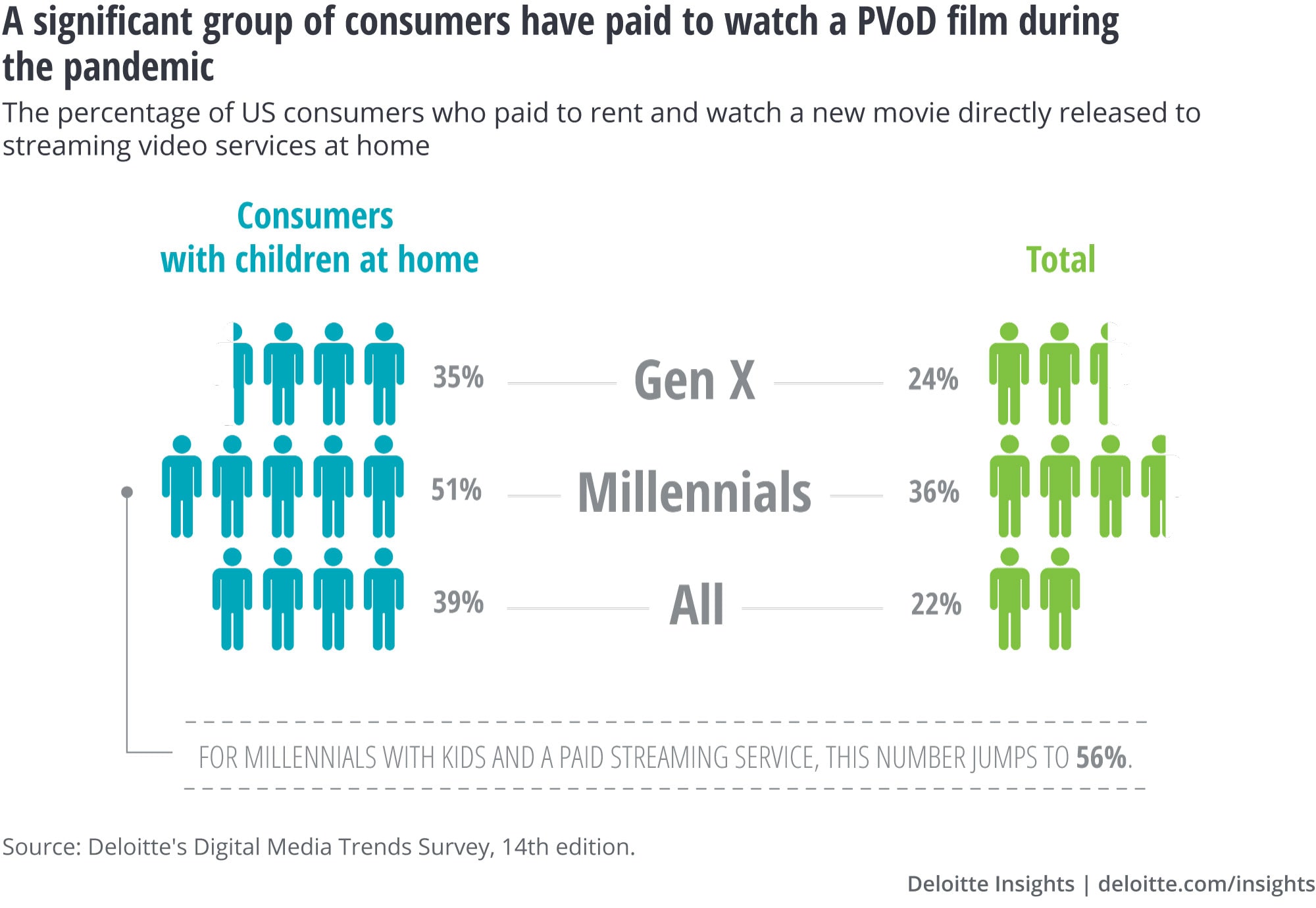After COVID-19, will movie fans return to the theater—or keep watching at home? Digital options such as PVoD are gaining traction for new film releases
3 minute read
31 July 2020
Consumers are understandably reluctant to return to movie theaters. Will the increasing popularity of PVoD and streaming options inspire film studios to reevaluate their distribution and release strategy going forward?

In March 2020, the COVID-19 pandemic disrupted the motion picture industry at every level, shutting down content production and canceling theatrical premieres. With theaters closed and viewers stuck at home hungry for new onscreen content, studios quickly began exploring digital alternatives. While some have deferred movie releases (especially tentpoles) to 2021, others have sold/released their films via subscription-based streaming platforms. Several have taken a third route: releasing movies via premium video on demand (PVoD).1
Learn more
Explore the Thinking Fast series library
Subscribe and never miss a charticle
Learn about Deloitte's services
Go straight to smart. Get the Deloitte Insights app
Cinemas are reopening, albeit slowly and often with awkward safety measures. But millions of Americans with large TV screens and home theater setups may prefer to enjoy films from home for the next year or more. Will the increasing popularity of PVoD and streaming options inspire studios to reevaluate their movie distribution and release strategy going forward?
Initial trends suggest that going digital has been at least somewhat successful. Deloitte’s latest digital media trends survey (conducted during May, early on in the pandemic) found that 22% of US consumers—including 24% of Gen X and 36% of Millennials—had paid to watch a new release via PVoD.2 Perhaps unsurprisingly, the figure rose significantly for consumers with children at home. In fact, 51% of Millennials with children reported renting at least one PVoD film. For Millennials with kids and a paid streaming video service, that number jumped to 56%. Whether or not due to the pressures of having to entertain children during long-term lockdowns, some population segments have adopted PVoD more readily than others. Consumers who opted for PVoD reported enjoying the comfort and convenience of home viewing and the ability to watch with family.3
Recent market data points toward PVoD success as well. Universal released Trolls World Tour on digital platforms in April at a price of $19.99 for a 48-hour rental. The movie turned out to be a digital blockbuster, earning more in its first three weeks of digital release than its 2016 predecessor, Trolls, made domestically during five months in theaters.4 The next month, Warner Brothers released Scoob! on VoD platforms and found similar success.5
Subscription-based video streaming platforms are also using new movie releases as a hook to acquire and retain customers. In our survey, 45% of US subscribers reported selecting a specific streaming video service to watch new, original content unavailable elsewhere.6
With at least some moviegoers reluctant to join multiplex crowds for Friday-evening premieres, does this digital home-viewing shift sound a death knell for theaters? It’s unlikely: As soon as people again feel comfortable sitting next to unmasked strangers for three hours at a stretch, there will probably be a pent-up demand for going out and being part of a theatrical experience. In fact, our survey suggests that many people will be happy to return to the big screen: More than 60% of Gen Z and Millennial viewers said they were willing to watch a film in a movie theater within the next six months.7
Looking ahead
Of course, no one knows how the coming months will further shift viewers’ actions and preferences. And newly established digital movie-viewing trends—and the success stories—have raised new questions around movie releases, particularly with studios experimenting with releasing films exclusively to particular direct-to-consumer streaming services. Will PVoD become a viable alternative release method for all or just some cinematic productions? Is there a balance to be struck that supports theater owners and studios? Will PVoD have long-term consequences for the economics of film production?
The COVID-19 pandemic and its impact on the movie industry has challenged the typical notions around theatrical launches. Going forward, studios may have to take a portfolio approach to movie distribution rather than a one-size-fits-all strategy.
© 2021. See Terms of Use for more information.
More from the Thinking Fast collection
-
Can 5G unleash next-generation digital experiences in the home? Article4 years ago
-
How will millennials and Gen Z use 5G? Article4 years ago
-
Closing the tech conference gender gap Article5 years ago
-
Why organizations are moving to the cloud Article5 years ago
-
The satellite broadband industry is moving at hyperspeed Article5 years ago
-
The most valued technology gadgets of the last decade Article5 years ago












